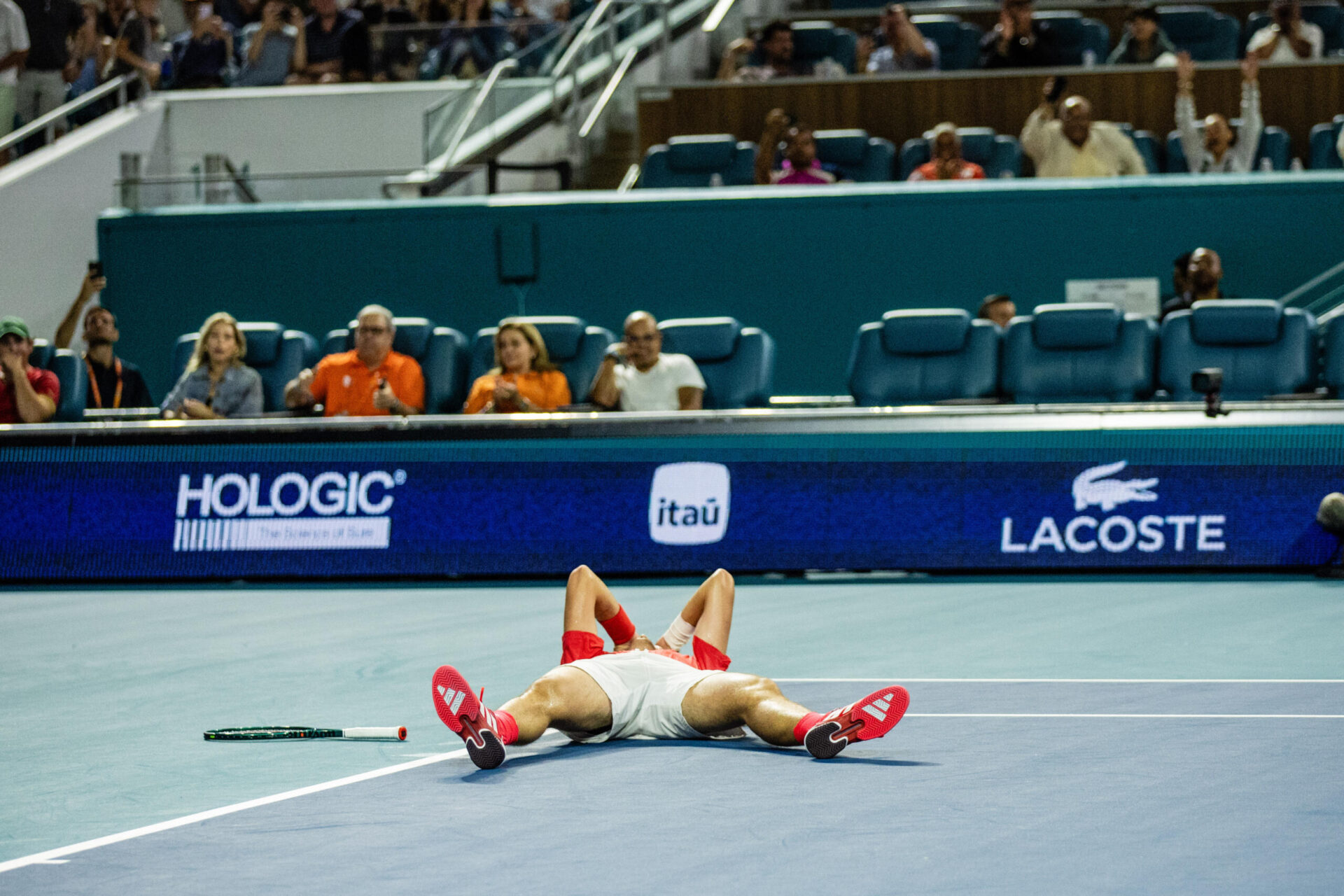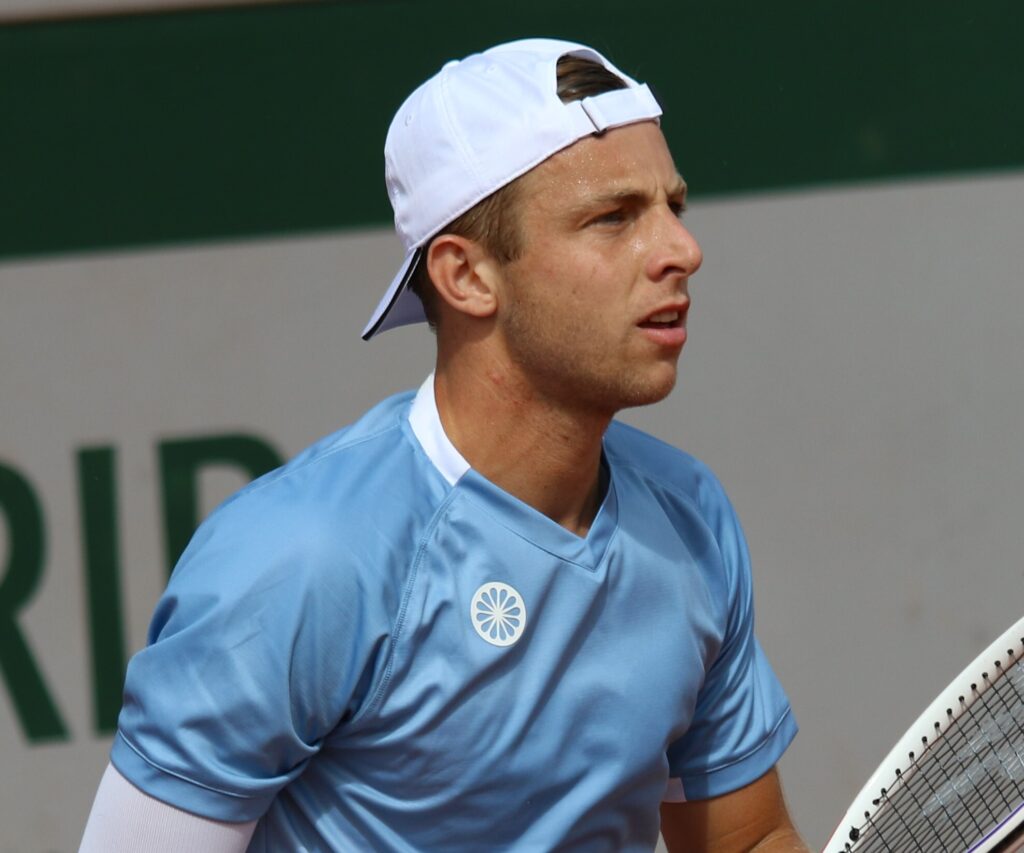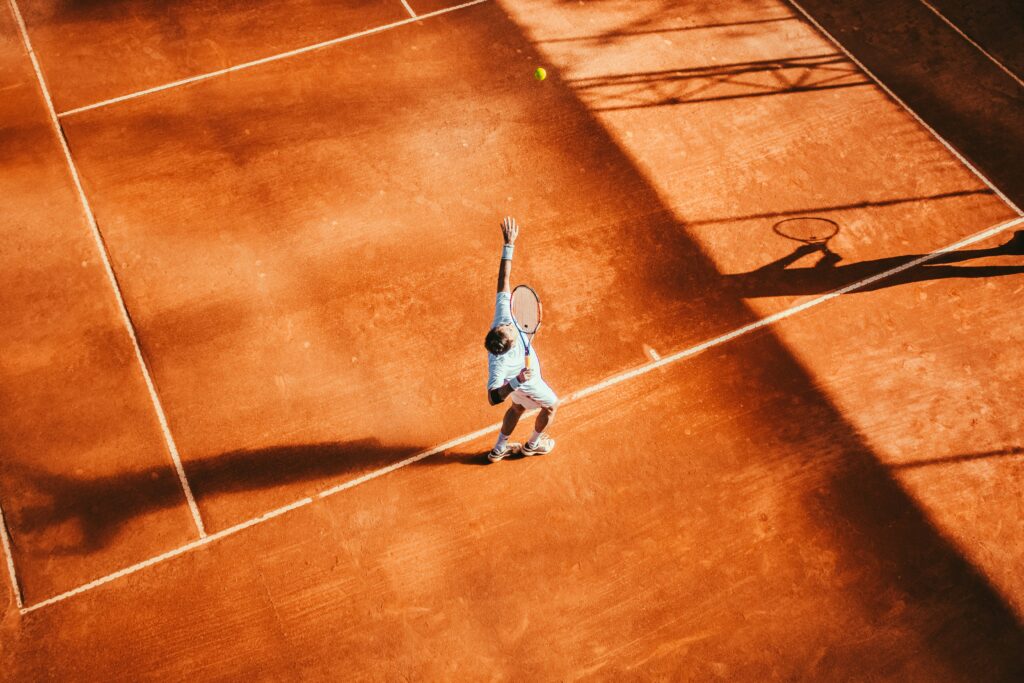Top players fail to capitalize on Sinner’s break – Miami shows the gap

Key takeaways from the 2025 Miami Open — beyond 19-year-old Mensik’s surprise title.
1. The women’s tour now appears much more stable than the men’s. Yes, unexpected breakthroughs still happen — Filipina Eala defeated Iga Swiatek in straight sets. However, what sets the current leaders apart is the ability to manage physical demands across tournaments. Aryna Sabalenka, for instance, doesn’t win every final (such as Indian Wells and the Australian Open), but consistently reaches them and maintains a high-performance level.
In Miami, Sabalenka left no chance for Collins, Zheng Qinwen, Paolini, and Pegula. The last of them seemed to have no chance at all, especially considering the time each player spent on court — 9 hours and 34 minutes for Pegula, compared to just 5 hours and 47 minutes for Sabalenka.
2. Since Australia, Swiatek has struggled to find her rhythm in matches that go beyond her control. Against weaker opponents, she follows a familiar pattern — handing out bagels or winning by a dominant score. But the moment she faces even the slightest resistance, her game unravels. It seems unlikely that she will change her coach before the clay season, but there’s a lingering sense that Wim Fissette won’t remain in her box for long.
3. While Zheng and Paolini showed impressive progress earlier this season, the difficulty of maintaining momentum in a competitive field is becoming increasingly clear. Gauff’s ongoing struggles with serve consistency and Badosa’s injury issues reflect how quickly form can shift. Rybakina’s recent dip, potentially influenced by coaching changes and team dynamics, adds to the picture of a tour where depth is high but long-term consistency remains elusive.
4. The top players on the men’s tour failed to capitalize on the opportunity left by Sinner’s absence — whether to take his place or improve their own positions. The best example of this is Alexander Zverev’s lack of determination. Despite having a chance to chase his dream of becoming world No. 1 after Australia, the German has missed a key opportunity to climb the rankings.
While Sinner earned 2,000 points by winning just one tournament, Zverev has accumulated only 1,665 points over the course of seven. Alcaraz, typically most consistent on clay, is also showing signs of uncertainty.
This year, he has two major finals to defend — Roland Garros and Wimbledon — which likely adds to the pressure. In fact, out of the top 10 players, only Fritz managed to reach the semifinals, while the rest crashed out in shocking fashion one after another. By the way, Fritz lost to the future champion Jakub Mensik, who was already being talked about last year.
5. It wasn’t just Goffin who showed his level. Gaеl Monfils also impressed, defeating both Lehechka and Munar, and making a remarkable comeback in the final tiebreaks. Grigor “Grigorenaissance” Dimitrov was also excellent at this tournament. Yes, he lost to Novak without much chance (although the statistics were already a disappointing 12–1 in favor of the Serb before their match), but the battle he put up against Serendolo was something special. Veterans continue to deliver under pressure, shaped by years competing in the Big Three era. They simply have no choice but to play and fight to the end.
6. Novak Djokovic lost in two tie-breaks to Jakub Mensik. A symbolic story: one player was fighting for his coveted 100th title, while the other was chasing his very first. The final was no contest for Djokovic — he fell three times, struggled to stay on his feet, and though his 73% first-serve rate was solid, his movement and focus hinted at fatigue. The cherry on top was losing both tie-breaks.
Djokovic is often called ‘Novak Tie-breaker’ for his psychological resilience, and he still boasts the best win percentage in tie-breaks. But unfortunately, he couldn’t handle Mensik’s serve. Surprisingly, even with Andy Murray in his box — one of the best returners in history — Djokovic couldn’t solve Mensik’s serve.
The situation with Djokovic is ambivalent. On one hand, reaching a Masters final at his age is a dream for any player over 30. On the other hand, this is Djokovic, and for him, that’s simply not enough. And of course — when will he have such an ideal opportunity for a title without all 10 top players present at the decisive stages? Especially — without Jannik Sinner!
Serving the trends
- The women’s tour shows signs of increasing structural stability, with top players maintaining strong performance over multiple events.
- In the men’s tour, top contenders failed to take advantage of Sinner’s temporary absence — no top-10 player reached the final.
- Veteran players continue to perform well in decisive moments, shaped by the high-intensity standards of the Big Three era.
- The current volatility in the men’s tour creates a favorable environment for young talents to break through — as shown by Mensik’s unexpected title run.
Cover photo: Miami Open presented by Itau




